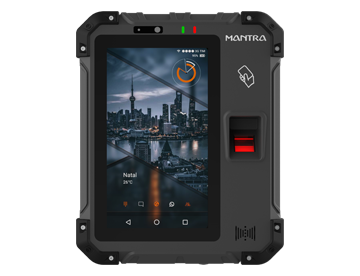
#FINGERPRINT CAPTURE DEVICE WINDOWS#
Using a smart card reader with Windows Vista is about the most secure form of access control you can get today. Windows Vista also offers easier smart card deployments because most of the logon architecture developments were focused on ensuring safer access control and attempting to make the smart and the safest option for anyone accessing a Vista system. Tools and Traps… Windows Vista and Smart Cards To use smart cards for network logon, the computer must run an OS that supports smart card authentication, such as Windows 2000, Windows XP, or Windows Vista. If the PIN is compromised, an administrator can change it or issue a new card. To log on with a smart card, a user must insert the card in the reader or swipe it through and enter a PIN that is associated with the card. The certificates are stored on the cards by an authorized administrator. Smart cards used for logon authentication generally store a digital certificate that contains user identification information, the user’s public key, and the signature of the trusted third party that issued the certificate, as well as a time for which the certificate is valid. They’re also inexpensive in comparison with biometrics authentication devices.

The cards are generally resistant to tampering and relatively difficult for a hacker to compromise, because they are self-contained. This provides an extra level of security, the “something you have” factor.

Smart cards can also be used for network logon authentication. These cards are especially popular in Europe. Banks use smart cards for conducting transactions. Satellite television services use smart cards in the SATV receiver to identify the subscriber and that subscriber’s service level. Smart cards can be used for different purposes, but one of the most popular is for authentication. A smart card reader-a hardware device-is needed to write to and read the information on the card. In a broad sense, it refers to any plastic credit-card-size card that has a computer chip (a memory chip and/or a tiny microprocessor) embedded in it to hold information that can be changed (as opposed to less “smart” cards that use a magnetic strip that holds static information). The term smart card has several different meanings. In Microsoft Vista for IT Security Professionals, 2007 Smart Card Authentication


 0 kommentar(er)
0 kommentar(er)
